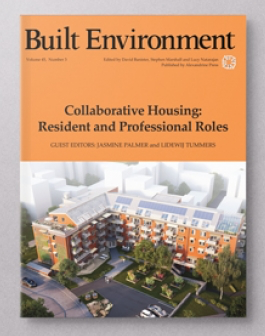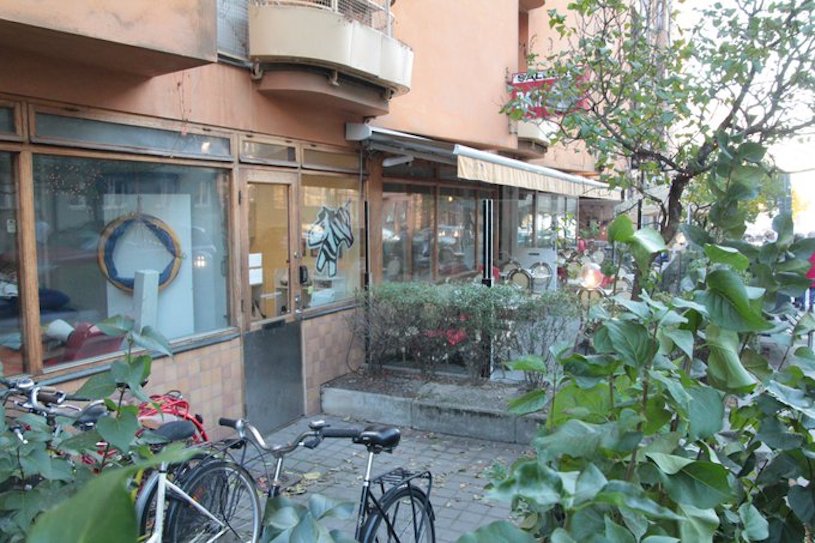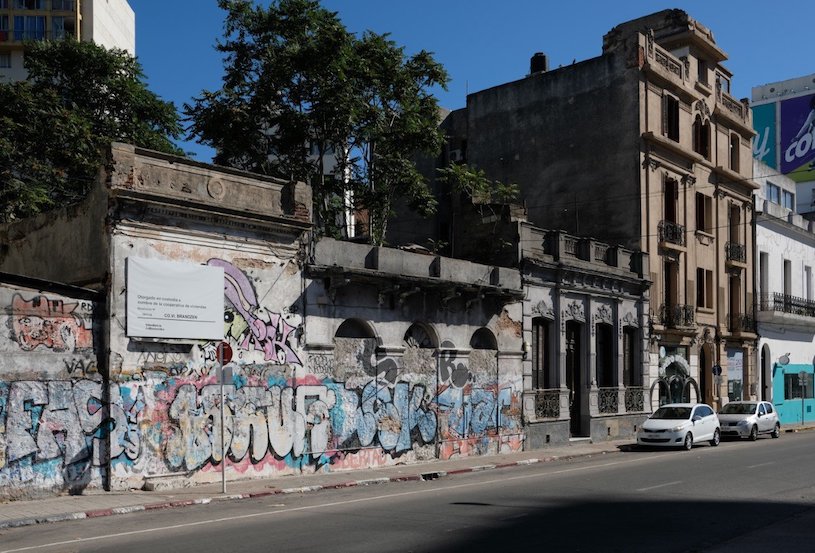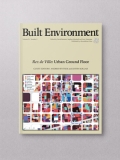Community-led housing as an active international field
 It is with great eagerness that I received my review copy of the Built Environment special issue,‘Collaborative Housing: Resident and Professional Roles’ guest-edited by Jasmine Palmer and Lidewij Tummers who are themselves established practitioners in this complex field.
It is with great eagerness that I received my review copy of the Built Environment special issue,‘Collaborative Housing: Resident and Professional Roles’ guest-edited by Jasmine Palmer and Lidewij Tummers who are themselves established practitioners in this complex field.
I work primarily as an architect in the UK and specialise in projects led largely by volunteers or residents themselves, a field that we are beginning to call ‘community-led housing’ (or CLH). I also work as an adviser with the recently-established ‘CLH London Resource and Advice Hub’, where we find ourselves in an intense phase of investigation into how to best balance the pace of delivery of badly needed new housing with efforts towards empowerment of users of the built environment, and efforts to think otherwise about how we can live together on our fragile planet.
I regularly find myself badgering colleagues for examples of the effective deployment of professional expertise within community-led projects and wider initiatives, especially those that focus on empowering residents in the process. "Tell me how to do it!", I cry. Yet I am often frustrated by the complexity of the answers that reference the multiple economic factors, political motivations and ungovernable forces of chance that one must be aware of and operate within.
The emergence in the UK of an accredited training programme for CLH advisers just last year provides further food for thought about the optimum strategies and tactics and a possible ‘model’ for cultivating effective collaboration between professionals and residents. This publication therefore comes at an opportune moment in the search for best practice.
From a UK perspective, we often find that useful reference points can be found in foreign contexts where support infrastructure is more established, and this fascinating and wide-ranging special issue takes us on a world tour of relevant examples. These include the UK but stretch much further to western and eastern Europe, Scandinavia, Africa, South America and Australia. Jasmine Palmer, one of the guest editors of the issue, examines three cases drawing on her role as a co-director of the Melbourne-based Nightingale Housing Research Collaborative.
Jasmine Palmer and Lidewij Tummers first set the scene with a useful joint article that serves as overview of the field and its nomenclature, which helps practitioners reflect on how their own practice fits in a wide international sector. The article raises pertinent questions about the role of professionals, and professionalism, in (re)emergent self-organised housing initiatives, which is an under-studied field as the authors note.
The remaining nine articles each tackle a specialist topic within the broader field of collaborative housing. I must admit that some represent hyper-localised studies that leave me wondering about their relevance, but others provide fascinating insight that is more readily transferable to other contexts.
Ingela Blomberg and Kerstin Kärnekull's study of the evolution of cohousing projects in Sweden, for example, looks at how the knowledge and experience of existing, established projects can be brought to bear on the 'new wave' of contemporary projects. They conclude that this is best facilitated by intermediary organisations, and highlight an important function of 'hubs' such as ours in London. An added bonus for someone like me who is keenly interested in how the architectural 'hardware' supports the on-going software of housing in use, is that the authors also include case studies complete with plans! (see all the case studies listed here)

Figure 2: Sweden’s first modernist collective house
The authors conclude that a lot of work has always been required to realise these projects, but also that the time dedicated to initiation stages is probably a key-factor in well-functioning, sustainable long-term housing. I am crying out for someone to present this return-on-investment argument in a coherent and compelling way, but alas it seems that such an objective is beyond the scope of the material presented in this instance.
Another highlight is Lucia Landenberger and Matthias Gütschow's study of the specific role of project managers in Baugemeinschaft or ‘Building Group’ practice, in which they conclude that a broader cultural education is required in additional to traditional professional training if project managers are to engage their clients effectively in their projects. Although I personally found this conclusion a bit obvious (a similar observation could be made about any 'specialist' field of project management) the study is rigorous in its analysis of why traditional training falls short in relation to various project tasks. In addition, I'm excited by the prospect of a specialised training course for project managers in this field that the authors indicate is in development.
Palmer and Tummers both contribute articles of their own within the special issue, the first of which is Palmer's exploration of the way risk is carried when housing stakeholders 'develop without developers'. This subject is incredibly relevant to our work here in London, which is preoccupied with the question of how to enable groups of ordinary people to take on the risks of development and benefit from managing them well, achieving an outcome that other developers are unwilling or unable to achieve. Palmer’s observation that the traditional developer role is distributed among stakeholders and other project professionals differently from project to project matches my own experience, as does her observation that there is not really a mature or established 'ideal form' for this re-distribution of responsibilities.
The complimentary roles of both intermediary organisations and the government agencies are frequent themes among the remaining articles. Dr Jennifer Duyne Barenstein and Michael Pfister's piece eloquently discusses each of those in the context of Uruguay, the so-called 'Switzerland of Latin America', due to the prevalence of housing cooperatives in the country and the extent of State support for self-help housing programmes. I found it slightly mind-blowing that cooperatives there are required as a condition of any State financial support to appoint one of a series of regional, non-profit, independent and inter-disciplinary technical institutes (IATs) to help to broker trust between the parties involved.

Figure 3: COVIVEMA 5 behind the decaying housing stock in La Aguada, Montevideo
Indeed, the inter-disciplinary nature of the professional support needs of collaborative housing projects is a common theme among articles in this special issue. A number of authors point out that most professionals working in collaborative housing projects need specialised additional training to augment that which their professions traditionally provide. Shortfalls seem typically to be around understanding development risk and how to manage it, and it communicating with stakeholders.
In concluding this review, I am caught by the realisation that this publication above all else reminds us of the wonderful observation of John Turner that housing is a verb. This is reflecting in the idea that collaborative forms of housing have ongoing professional needs beyond the inception, delivery and completion phases of a project and into the long-term 'live' stage.
It also makes me reflect on what collaborative housing projects can do for people involved, and what those projects can do for the cities they are part of. In reminding ourselves of the social and urban environmental justice angle to what we do, we also anchor ourselves to the fact that that what we do can never be just about the numbers.
________________________________________________________________
As ever we welcome further Built Environment blogs & tweets on this theme!
Figure 1: Cover of ‘Collaborative Housing: Resident and Professional Roles’ guest-edited by Jasmine Palmer and Lidewij Tummers
Listing Image & Figure 2. Sweden’s first modernist collective house, John Ericssonsgatan 6, Stockholm. The dumbwaiters still function. (Architect: Sven Markelius; Photo: Kerstin Kärnekull)
Figure 3. The building of COVIVEMA 5 behind the decaying housing stock in La Aguada, Montevideo. (Photo: M. Pfister)


